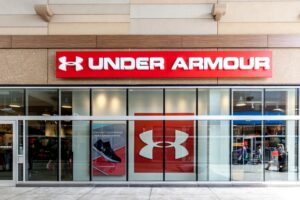June 10, 2016
Many shoppers are buying more online than in stores
Here’s a first for you: New research shows that people who bought products and services from websites at least twice over a three-month period, made more than half of their overall purchases online – 51 percent to be exact – if you don’t count groceries.
The study conducted by comScore for UPS has tracked a gradual rise in the percentage of purchases being made online in recent years. Last year, 48 percent of overall purchases were made online, up from 47 percent in 2014.
Of those who said they purchased more online than in stores, 40 percent made between four and six purchases. The same percentage had seven or more transactions.
As might be expected, younger consumers are driving the shift to online purchases. Fifty-four percent made more purchases online than in stores compared to 49 percent made by everyone else.
Citing Commerce Department figures, a Wall Street Journal article points out that online still represent less than eight percent of total retail sales. More than half of shoppers, according to Forrester, will make at least one purchase online this year.
A USA Today article points out that while consumers are quickly shifting to mobile devices to shop online, the largest percentage still happens via computers. Thirty-two percent will use a desktop or laptop computer while 25 percent plan to use a smartphone and 24 percent a tablet. The remaining 11 percent prefer to simply go to a store to buy what they want.
Discussion Questions
DISCUSSION QUESTIONS: Do you expect to see the percentage of overall purchases being made online to climb more quickly as the percentage of consumers going online to shop is rising? What are the biggest factors influencing whether people purchase products online vs. in-store today?
Poll
BrainTrust
Ken Morris
Managing Partner Cambridge Retail Advisors
Recent Discussions







The simple answer is YES. The experience online continues to get better. The delivery for the last mile continues to get faster and cheaper. Retailers are going to have two choices: 1. become more effective selling online, or 2. create really compelling stores with amazing customer experience.
The really interesting sidebar discussion is, how do you count sales going forward? If a customer visits a store and purchases online while standing in the aisle, who gets credit for the sale? And what if the consumer buying from their home computer clicks and collects in store … who gets credit? The real issue here is not online versus stores but who will win the loyalty and business from today’s omnichannel consumers.
One of our working hypotheses at Slice Intelligence is that we have moved from e-commerce v. 1.0 — which was defined by wide selection and low prices — to v. 2.0, where convenience is becoming a critical differentiator for many merchants. Subscription-based business models define many of the hottest online retailers. IoT commerce, where our washing machines and printers order laundry detergent and ink for us. Same-day delivery, meal kits, etc … We believe that merchants’ delivery against consumers’ increasing desire for more convenience is going to push e-commerce well above the 10 percent mark.
I’m skeptical about this finding. I have been running numbers on Amazon. All online purchasing combined including Amazon adds up to about 8 to 9 percent of total retail. (Let’s figure Amazon retail equivalent revenue at $65 billion and the retail market at $3 to 4 trillion with the average retailer’s online revenue just over 7 percent.)
There is a way to make this research make sense. And that would mean online shopping may be dominated by a small number of people who buy a LOT online. If that were true, those people are not where the bulk of retail purchases have come from in the past.
But I remain skeptical of this result’s accuracy.
This is all about natural evolution. As more people discover retail sites that are intuitive, simple and easy to navigate, more e-commerce will take hold as the primary channel for commerce in general. Sure there are myriad external factor that affect this progression, however, I’ll say it’s inevitable.
It’s a generalization I suspect and has to be dependent on the types of products (not groceries?). Whatever the statistics, though, people are clearly very comfortable buying a broad range of products online. To Chris’s point though, the channels are merged and the path to purchase may cover a variety of channels. Where the final order is placed (or is it where it is picked up?) isn’t necessarily the right place to attribute the sale.
1 percent is a rapid increase? Press people over-hype everything — the press on this must have been created by ex-political reporters. Online is growing, but stores’ experiences are expanding. All the metrics vary by sub-vertical. Food versus apparel versus DIY. It’s not fair to see it as one single number. If online did what some online hoarders wanted then no one would leave their homes and the streets and freeways would become barren. Stores STILL lead the game. In maybe 100 years online will get really close. But the return costs and fraudulent buys will destroy their margins.
As consumers find online shopping to be easy, satisfying and find that it meets their expectations the usage will continue to grow. Being able to see products quickly, get relevant information and pay reasonable shipping fees are all reasons to continue or increase online sales. As retailers offer no customer experience or reason to use gasoline or put up with the hassle of parking, consumers have less reason to visit the retailers.
These surveys have to be read very carefully. “Many” is a subjective adjective. I would say that “some” is probably more accurate, and “most” is not even in the picture. Then we go to ” … made more purchases online … ” That does not say that they “only” made purchases online. This is the reason that online purchases are only 8 percent of all retail sales. Purchases made online will grow, yes. Whether “more quickly” or at the same pace or a declining pace, I cannot predict. But the factors influencing such decisions could be seasonal (online sales could increase in inclement weather), the inevitable store closings (we may have to travel a little longer to find the one we like) or the cost of online memberships for free shipping (how much is the consuming public willing to pay and at what point does it lose the value proposition?). One other factor may be the product category (what are the product types for which online sales will grow at an accelerated pace, versus those, more fashion oriented or gadgetry, for which the consumer may find it more fun to shop in person?).
These scenarios have to be modeled before one can accurately predict where we are going.
When considering products that are needed immediately or where the experience of buying them is much or most of the fun, in-store retail will still be the choice. On the other hand, when the product is not needed quickly, the shopping experience is less than exciting and a one- or two-day waiting period for shipping isn’t a big deal, convenience and/or price will be a bigger driver and online purchasing becomes more compelling. Plus, as more and more Millennials move into more consumption, mobile will begin to accelerate more quickly as the way shoppers purchase.
Something doesn’t add up here. comScore reports 48 percent of overall purchases were made online in 2015 and the Wall Street Journal article, based on the Commerce Department figures, reports less than 8 percent of purchases were online. I place more credibility in the Commerce Department statistics than the overly inflated comScore numbers.
That said, I believe the online percentage will increase over time but will level off at some point, as there is only so much one can do with two dimensions and two senses. The theater of shopping will always be a draw for people. At least 60 percent of shoppers who purchase in a store have first researched online before shopping in the store (webrooming). Many have also looked at a catalog (catrooming) before said purchase and more than 50 percent of online purchases are made after a store visit (showrooming). We need to engage the customer wherever, whenever and however they chose to shop and their journey is circuitous … it is not a single-channel purchase today. Some retailers like Performance Sports Group (Bauer Hockey, Maverik Lacrosse, Easton Baseball) and Restoration Hardware (RH Gallery stores) have taken the store showrooming concept to a new level where a visit is an experience you won’t soon forget. This is the wave of the future — a meshing of the channels into a truly amazing brand experience where the channel one chooses to make the final purchase is irrelevant.
As e-commerce retailers add features to their online shopping experience that ease friction points for consumers, online shopping will continue to increase.
The friction points that have held back e-commerce growth include the need to touch, feel and try clothing (shoes and similar items), shipping costs and return policies as well as the immediacy of customer support to answer questions while in the process of making a decision. E-commerce retailers have been chipping away at these friction points with free shipping offers, more liberal returns and online chat.
The next step in development for e-retailers will be to not just offer these added value services, but to deliver on each one with the goal of replicating a real-world shopping experience. Retailers are well-advised to make a list of steps in the shopping process that are less customer friendly than in the brick-and-mortar world and invest time and resource in addressing each of these steps.
I’ve commented on similar questions that I am seeing a high percentage of sales via desktop/laptop/tablet being made by consumers who went to a store to actually see an item or piece of apparel considered high-ticket that they were researching. Everyone talks about in-store mobile showrooming, but I think a high percentage want to validate a planned online purchase with an in-store visit and either don’t want to take the heavy object home or want to wait for a possible sale or for it to be back in stock to order at home. This practice could be affecting some of the numbers.
Friendly customer service — live agent. Advanced analytics to support insight that drives personalized service based on customer preference as well as predictive behavior. Seamless integration between mobile site and pc navigation of site. No hassle returns and free shipping — either with subscription or based on threshold spend. Easy to navigate website with smooth checkout process, prompts for live chat. Preference center that captures the customers’ needs and wants, once ingested applied on a consistent basis to drive personalization and relevancy. By applying these practices and methodologies and more, online will continue to grow.
Overall I see the percentage of purchases being made online climbing, but never completely overtaking brick and mortar shopping. Retail’s saving grace is the phenomenon of ROPO — research online, purchase offline. While online shopping is great for convenience, shipping costs will never go down and that’s a big factor that’s affecting online shopping.
Most people know their sizes but some consumers are adamant about trying something on before they pull the trigger. Instant gratification is also motivation behind purchasing in-store, which online, even with overnight shipping, can still not compete with.
I see this situation as bimodal distribution of retail purchases: those most comfortable with online purchases will make most (>50%) of their buys online (irrespective of where the goods are delivered or picked up) and those that would rather be in stores will also shop online, but at a much lower percentage. It’s comfort, convenience, speed, and trust.
On the statistics, I tend to put more credence with the Commerce Department’s and other global online metrics that peg online sales around 10% percent of overall retail sales (yes it is higher in the UK and everywhere is climbing at higher rate than offline).
Convenience and frictionless commerce will continue to drive sales and hopefully soon we’ll stop dividing retail into online and offline, and realize that the channel doesn’t define the industry and that the experience transcends all.
The light bulb is turning on now in the majority of consumers’ minds: online shopping and purchasing is easier than going to a store. It just is. I’m not sure what’s taken consumers so long to figure that out, but it’s moving faster now than it was only a couple of years ago and IMO will overtake in-store purchasing altogether by 2025.
Here’s the new mantra: people don’t HAVE to go to stores anymore, they have to WANT to go to stores. That means that stores, in order to stay relevant, will have to become more interesting, more inviting and just better than the current model or they will close. Check out (Google) the new Macy’s test store in Columbus Ohio. Looks like the light bulb went off at Macy’s HQ as well.
Of course, shoppers are increasingly buying onine and the shopping experience needs to be optimal. Think about what this means for traditional Department Stores. According to the American Customer Satisfaction Index Retail Report 2015 survey, overall retail satisfaction is declining as Internet retail satisfaction is improving. Even though customer satisfaction with department stores actually stayed steady or even improved, foot traffic declined nearly 10%.
To stay competitive, department stores must improve the overall customer experience and capitalize on selling opportunities across both physical and online channels. By extending digital floor space to both existing brands and new sellers, Department stores can offer more choice at fair prices to existing traffic and retain customers that would otherwise go to another store.
And, just as Amazon disrupted the retail world with its global online reach and network of sellers, new companies have successfully emerged in categories traditionally dominated by department stores. Consider, for example, fashion and apparel sites such as Farfetch and Lyst. These companies have quickly become leaders in fashion categories via the marketplace model, wherein trusted third-party brands and other sellers list products directly on the site. Physical retailers have the opportunity to do something these sellers cannot — augment the online experience with a marketplace and marry it with the in-store experience.